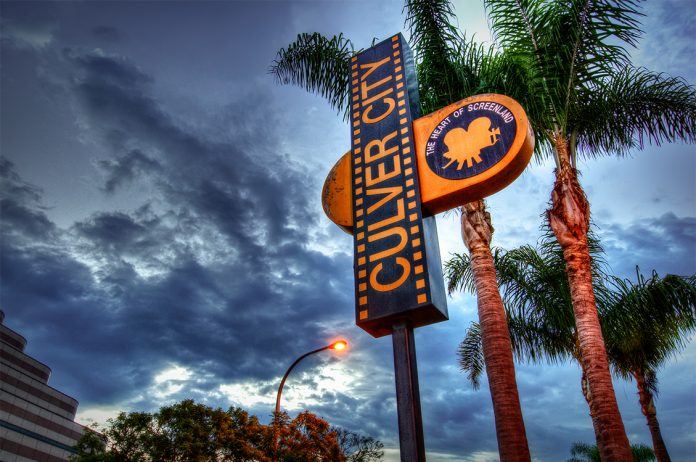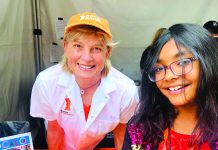By Gary Luster
According to the Anti-Bullying Institute, a branch of the Riverside Medical Clinic Charitable Foundation, one in seven students in grades K through 12 are either a bully or have been a victim of bullying. In addition, more than 160,000 U.S. children miss school every day because of fear of attack or intimidation by other students.
The Get Safe Program was implemented to change all of that.
What is the Get Safe Program? It is a program that teaches school children to recognize bullying and then take steps to stop it.
In a room full of elementary school students and their parents at local libraries, Get Safe Director of Training Dave Monderine teaches how to combat bullying and it’s not by using their fists. He teaches that kids should use the three nonviolent weapons already at their disposal: their brain, their voice, and their body.
“The purpose [of the program] is to let kids know that fighting is never the answer when it comes to bullying prevention and response,” Monderine said. “Reporting is ok. It’s ok to report to an adult you trust about bullying behavior.”
The most recent anti-bullying training was held at the Culver City Julian Dixon Library on June 11 and is part of a circuit where Monderine visits all 86 libraries in the Los Angeles County library system, training kids, and adults in recognizing and stopping the bully behavior.
Monderine, who has been involved with Get Safe since 2008, said that a new circuit of training will begin this summer at all 86 libraries in the Los Angeles County library system.
To ensure that they are safe from bullying behavior, Monderine said kids should use their brain to make decisions such as avoiding people, places, or situations that cause an “uh-oh” feeling in their gut. He also said kids should use their voice to tell bullies to “back off” in a loud manner which not only startles bullies but can also serve as an auditory signal to any nearby teachers, parents, or other trusted adults. In addition, Monderine said that if worse comes to worst, kids can use their body to defend themselves with blocks and kicks.
One of the things that make Get Safe’s anti-bullying program popular with both parents and kids is its emphasis on behavior wherein they identify and target the bully behavior as opposed to labeling kids as bullies, thus making it easier to remediate children who engage in bully behavior.
“We figure that if you are a bully, then somebody is bullying you or something’s wrong and just by ignoring it and shaming that child even more, you’re making that situation even worse,” said Get Safe Advocacy and Training Specialist Leanne Monderine. “So by helping them and showing everybody that we help, then we have a better chance of flushing that out.”
This even applies to how the kids are taught to interact with those who have been bullying them.
“Instead of saying, ‘I don’t want you to do that because I don’t like you,” you say, “When you do that it makes me upset and I don’t want to be upset, so how about we look at it another way?” Leanne said.
One thing that many would find surprising are the many actions that constitute bullying. Get Safe identifies several types of bullying such as verbal bullying which includes name-calling and spreading rumors; social bullying such as isolating people because they speak a different language or are a different ethnicity, and cyberbullying which involves posting mean messages on social media platforms such as Facebook and Twitter.
Because children can be easily intimidated to not speak up when after a bully attacks them, Monderine encourages the kids to pledge to become Backoff Buddies. When a Backoff Buddy, either on the playground or in their home neighborhood, sees another child getting bullied, they agree to immediately tell an adult that they trust. This way, the bully victim can get help even if they’re too afraid to report the incident themselves.
“Bullies want us to be quiet, they don’t want us to say anything and if we do, [they will claim that]we got them in trouble versus them getting themselves in trouble,” Monderine said.
Along with the anti-bullying training, Monderine also teaches kids about advocacy through Get Safe’s Personal Advocacy and Leadership Skills (PALS) session which is usually conducted right after the anti-bullying training.
Through PALS, Monderine teaches kids to speak up for what is important to them and to ask for help when it is needed. The children are encouraged to articulate what they find most important and then identify three to five gifts that they have such as playing an instrument, playing a sport, or drawing. Once those things are identified, Monderine gets the kids to think in a way that combines what is important to them with any special skills they may have.
So for example, a child who is a skilled artist and wants to help people could create posters for a charity bake sale.
“We were asked by the library system to develop a parent component and also an advocacy component,” Monderine said. “Teach kids how to speak up for their rights, know their circles of support, and how to recognize their gifts and their talents to help others.”
In addition to helping kids, Get Safe also helps adults in dealing with situations involving violence, sexual harassment, and personal safety.
Get Safe was created in 1993 by Stuart Haskin, an Orange County Sergeant Reserve Deputy Sheriff and author of “The Gift of Freedom: A Stronger Safer You.” Haskin holds black belts in four different martial arts and is a State Certified Assault Victim and Domestic Violence Counselor.
For more information on Get Safe and its programs for both children and adults, visit their website at www.getsafeusa.com.













